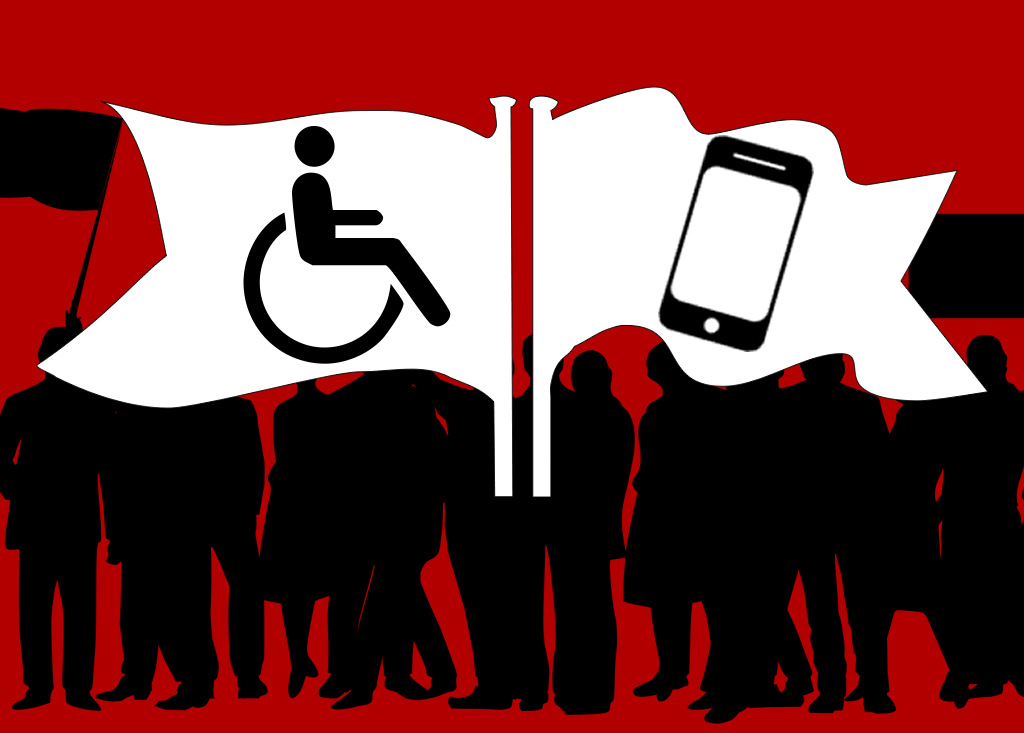
Web Accessibility: The Second Web Revolution
Before now, there had been only one revolution in web design. That was mobile. The second revolution is the Accessibility Revolution. We're already in it, but many are still unaware.
Comparing the two, the differences have to do with the forces pressuring the change, how pervasive those forces are, and the cost of ignoring those forces.
Steve Jobs introduced the first iPhone in January 2007. Today, 11 years later, there isn't a legit website that isn't mobile friendly, and I think its pretty safe to say that 5 years after that iPhone came out, any competitive site was mobile friendly. The demand on web designers to go mobile felt fast, but it didn't happen over night. The force behind this revolution came from consumers who were adopting new devices to access the web, and from businesses that wanted to reach those users. The cost of reaching - or not reaching those mobile users varied by category, product, company. It also took some time for consumers to actually begin transacting through their phones - so that cost was further delayed. Eventually those forces grew broad and strong enough to force the change
In the case of the Accessibility Revolution the nature and intensity of the forces of change are quite different. In this case, the force is coming from the end of the barrel.
Adopting Mobile was optional. Web Accessibility isn't.
First, remove any question about whether or not people with disabilities have the basic civil right to access websites. We should be beyond that point by now. The DOJ and most judges have concurred that website are "places of public accommodation", and therefore fall under the protection of the ADA.
Now, consider how prolific physical barrier ADA cases were during the 90's. Lawyers sent out "testers" to every place of public accommodation - dentist offices, restaurants, hotels, banks - any commercial space that would otherwise be accessible to the public. With clipboards, tape measures, and cameras, these people had to get into their cars, drive to these places and then report back what they found. That took some work, yet still pretty much any business in every town got tested.
Today, we have the same basic model, but this time it's digital. The process takes minutes and costs next to nothing. All it takes is a quick automated scan of practically any website to generate a report with not dozens, but hundreds, if not thousands of ADA violations. Cut & paste into either a demand letter template, or perhaps into a federal complaint, and out it goes.
Some fight. Most settle. You don't win these cases, so these plaintiff firms are just printing money. The model is simple, transparent - nothing proprietary here. There is also no barrier to entry (other than a law degree) and so easy to scale. So this model is extremely ripe for mass replication.
Its for this that the plaintiff's bar association lobbied so hard against the Department of Justice's plans to provide clear rules and regulation for this for the past decade - and succeeded. The DOJ has delayed since 2010, and has now taken this off the schedule entirely. Yes, Congress could fix this, and in fact the House did actually pass a bill that would provide things like a fixing period, however the bill has little to no chance of reaching the Senate floor. Congress is broken. This leaves it all to the lawyers and judges, and so grows this cottage industry.
So in circling this back. Where the forces of the Mobile Revolution were market-driven and grew with the adoption of the new mobile technology, the forces behind the Accessibility Revolution are more aggressive. There is a lot of money waiting to be taken.
So, while some website owners might otherwise adopt Universal Design organically with their next website because its the law and also an opportunity to reach more customers, most will be forced at a very high cost and in a very short period of time.
Its for these reasons, that I believe I feel quite confident that the Accessibility Revolution will dwarf the Mobile Revolution.
In the end, web accessibility - expressed through Universal Design will make websites better. Better UX and better SEO. And best of all, all people will have the same opportunities to enjoy equal access to this thing that has become intrinsic to life today... for better or worse.
